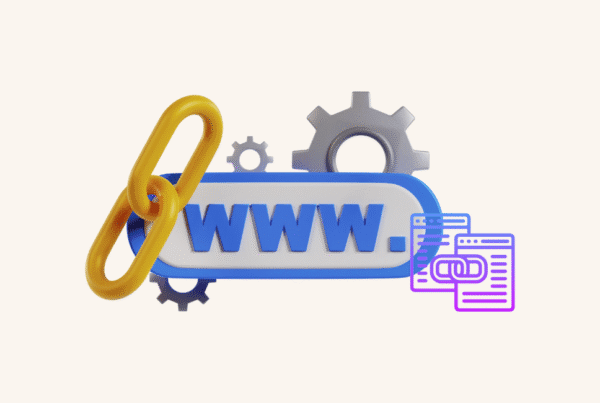Updated: 19 March 2024 • 9 minutes Read
Some people want to transfer domain ownership but are unsure how to do it. If everyone agrees, you can transfer domain ownership.
However, since a domain is a valuable asset, relying only on spoken agreements for transfer is not a good idea. It can lead to disagreements. It’s important to prepare correctly, including discussing things, making a written agreement, and handling details like changing the owner information and moving services.
 What is a domain transfer?
What is a domain transfer?
People often find themselves in situations where they want to transfer a domain they own to someone else. For example, if you wish to gift an unused domain to a friend or sell it to a potential buyer, you, as the owner, must start transferring ownership to the new user. This process is commonly referred to as a “domain transfer.”
Domain transfers are especially prevalent in transactions involving the buying and selling of domains. Initially, a domain is owned only by the registered user. Unless the ownership expires, others cannot acquire the domain partway through. Therefore, individuals may contact the owner to negotiate and organise a transfer if someone else owns a desired domain. Additionally, domain transfers can occur when purchasing a domain through auction sites or trading services.
Difference between “transfer” and “assignment” of domain
The term “transfer” is often used interchangeably with “transfer of ownership,” and you may come across “domain transfer” frequently. However, it’s crucial to understand that domain and ownership transfer are distinct concepts.
Domain transfer involves changing the service that manages a domain but doesn’t alter the ownership of the domain itself. The owner remains the same even if the service changes.
On the other hand, when transferring domain ownership, there are cases where the domain management service used by the new owner is also changed.
We will delve into the process of changing the domain management service in the later part of this article.
The market price of domain transfer
One domain transfer method involves financial transactions, usually through domain auctions or brokerage services.
The market value of domains can vary widely, influenced by several factors. Prices may start from a few dollars to a few hundred thousand USD. In some cases, premium domain prices may go even higher. However, for more typical scenarios, less expensive domains can be found for a few dollars USD.
Is a contract required for domain transfer?
In domain transfers, it’s typical for a contract to be exchanged between the person transferring the domain and the recipient.
When utilising domain auctions or brokerage services, a system is in place to ensure a transfer only happens with mutual agreement, often eliminating the need for a formal contract. However, disputes can arise in direct transactions between individuals without intermediary services. It’s advisable always to have a contract beforehand to prevent any issues.
Templates for domain transfer contracts are readily available online, simplifying the creation process. Moreover, there are law firms specialising in domain transfers. While their services involve a cost for high-value domain transactions, seeking their assistance can be a wise choice to ensure a smooth transfer process.
 How do I transfer a domain?
How do I transfer a domain?
Domain transfers can be done through various methods. Besides negotiating directly with the other party, some methods involve services like domain auctions or brokerage sites. The primary methods for domain transfer can be summarised as follows:
-
Use an auction site
This method involves buying and selling domains through domain auctions, where domains are listed for bidding.
Well-known platforms for specialised domain auctions are available online. Most of them are domain experts and offer support throughout the domain transfer process, ensuring a secure buying and selling experience.
General auction sites also handle domain transactions. However, the platform doesn’t mediate the transaction in this case, and the domain transfer occurs directly between the parties involved. While auctions are advantageous for determining fair prices, especially for popular domains, it’s important to note that ordinary domains may not attract bids if there are no interested buyers.
In summary, domain auctions provide a fair pricing mechanism, especially for popular domains, and platforms can assist in the secure completion of the domain transfer process. However, less popular domains face challenges in attracting buyers and receiving bids.
-
Use a domain purchase service
This method involves buying and selling domains through domain buyout services.
Various services specialise in domain transactions, with examples such as Used Domain Sellers. What distinguishes these services from auctions is the certainty of the transaction and the advantage of predictable costs. However, a potential drawback is that the service unilaterally determines the domain’s valuation, which may lead to a transaction price differing from the seller’s desired amount.
-
Transfer between individuals
This method involves personal negotiations between the domain owner and a potential buyer to transfer the domain.
Usually, the prospective buyer expresses interest in acquiring the domain by contacting the owner through email or other means. Once the owner confirms their willingness to sell, negotiations for the sale take place. While this method avoids intermediary fees, it’s important to note that without the involvement of a third party, there’s a risk of potential disputes if the parties do not establish and formalise conditions through a contract before the transaction.
-
Using Site M&A (Mergers and Acquisitions) Services
This method involves buying and selling domains through website M&A (Mergers and Acquisitions) services.
In the context of site M&A services, where “M&A” stands for “Mergers and Acquisitions,” you have the opportunity to purchase profitable websites that are listed for sale. Since the acquired website comes with its domain, it effectively entails the buying and selling of domains.
When a website is included in the transaction, the price for buying and selling may be considerably higher than for just the domain itself. If your goal is to operate a different site using the acquired domain, there is a potential for increased costs in such cases.
Q&A
Domain transfers only happen occasionally, and there’s often a lack of readily available helpful information, making it challenging to find the desired information when needed.
Here, we will address common questions about domain transfers in a Q&A format to provide the information you may be seeking:
-
Will the domain transfer be completed immediately?
Domain transfers are nearly instantaneous when carried out within the same domain management service. However, if transferring between different domain management services, the process may take approximately two weeks to complete.
It’s crucial to be aware of the restriction on immediate retransfers. Within the initial 60 days of acquiring a domain, a rule prohibits its transfer to another provider during this period.
-
Can any type of domain be transferred?
The types of domains that can be transferred vary depending on the domain management service.
Some domain management services may only accept transfers for specific domains like “.com” or “.net”. Therefore, if a transfer is needed, it’s advisable to check in advance whether the specific domain is eligible for transfer with the chosen domain management service.
-
Will the domain settings be inherited?
When the domain management company changes, be aware that settings around the domain may be reset.
For instance, DNS server configurations are managed by the domain management service, so if you transfer the domain to another service, all settings will be cancelled and invalidated. If the domain doesn’t function as it did before after a transfer, it’s recommended to review the settings around the domain.
Summary
This session covered the essential knowledge for domain transfer.
Domain transfer is vital when seeking to acquire a sought-after domain. Given the often high-value nature of these transactions, tasks like negotiating prices, agreeing on transaction conditions, and creating contracts can be challenging when done individually.
Automated transaction processes in domain auctions and brokerage services ensure secure domain transfers. However, when handling high-value domains through personal negotiations, it’s advisable to take precautions, such as seeking legal advice from a lawyer, to avoid potential issues.
Topics: Domain
Don’t forget to share this post!


